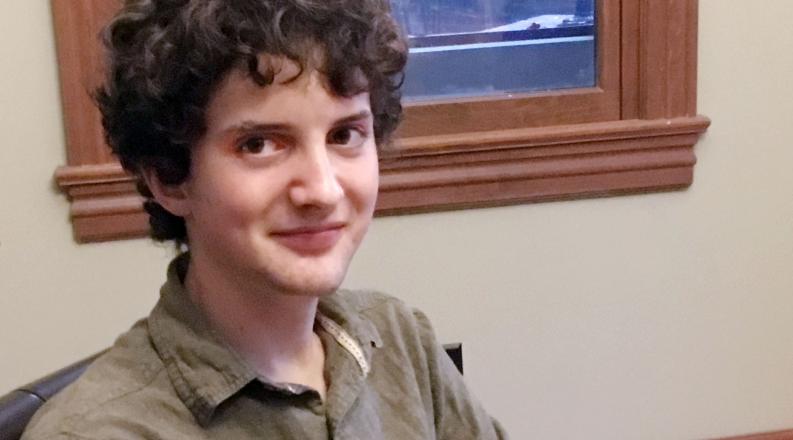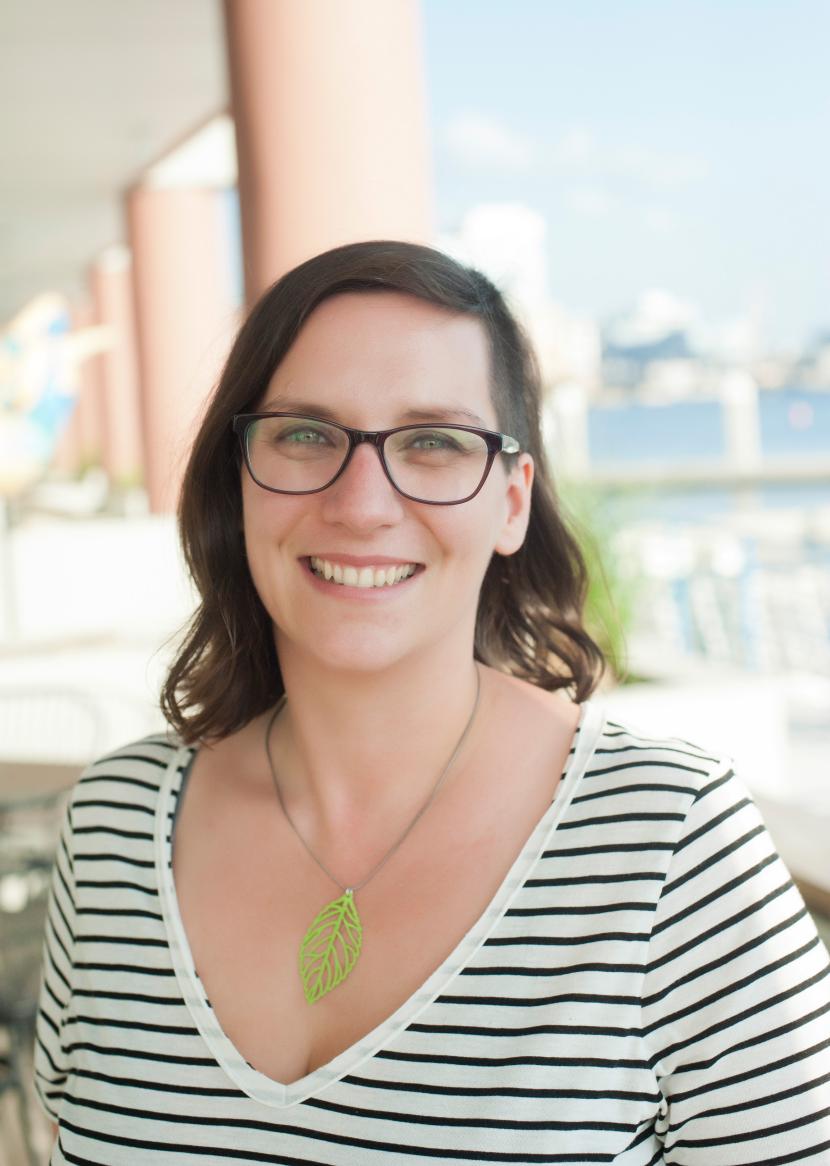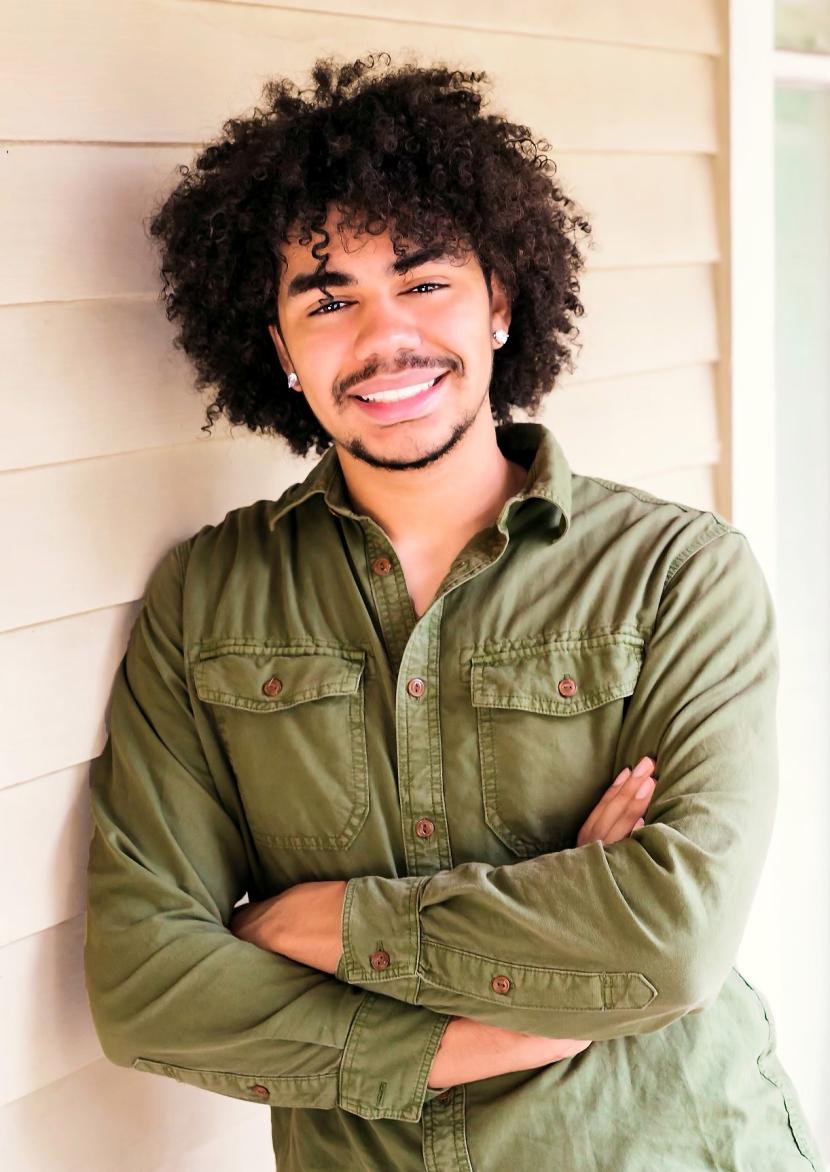By Sherry DiBari
Connor McCarty, a Maury High School senior, recently co-authored a scientific paper with mentors Raúl Briceño, assistant professor in Old Dominion University's Department of Physics, and Andrew Jackura, a physics post-doctoral research associate.
"As you can imagine, most high school students would not be able to contribute to a paper in theoretical nuclear physics," Briceño said.
Briceño posted "Solving relativistic three-body integral equations in the presence of bound states" on arXiv, a distribution site for scientific articles.
He expects it will be accepted for publication in the next few months.
The research paper attempts to solve equations that emerge when trying to describe subatomic and relativistic three-particle systems, Briceño explained.
The question dates back to Isaac Newton's Principia (1687). "He was interested in understanding the motion of large massive bodies due to their mutual gravitational pull," Briceño said.
"I am honored and humbled to have been named on the paper," McCarty said. "I feel that in the process of working on this paper, I have learned a lot about the process of research and about physics."
McCarty wrote independent code to reproduce numerical results in the paper. The code provided important cross checks and validations of the findings. The results required code that could be thousands of lines long.
"As one can imagine, it is easy to make mistakes when writing that many lines of code," Briceño said. "Having more checks on the results is absolutely necessary."
"It certainly is an impressive feat for someone at his level to contribute actively to such a research project," Jackura said.
In the spring of 2019, Briceño, in the process of developing ODU's Science Connection Day, met with several science teachers, including Maury High School's Mary Beth Dixon.
Briceño expressed a general interest in recruiting talented students, and Dixon recommended McCarty.
"In talking to him and hearing about other possible students, I decided to create the Python4Physics (P4P) course, which we first hosted in person in the summer of 2019," Briceño said.
Before the P4P course, McCarty learned Python programming on his own. At that time, he had experience programming in C#, but not much else.
"I thought it would be good to know some of the basics of Python, so I learned it from various websites and forums while attempting some small projects over about a month," McCarty said. "The first Python4Physics class helped solidify this knowledge."
During the course McCarty "not only did the exercises diligently, but he would figure out different ways to solve the problems assigned," Briceño said. "He quickly started helping other students in the classroom."
"After that summer, I invited him to join our team and start working on a project that we just published."
As mentors, Briceño and Jackura meet with McCarty several times a week.
"Part of my agenda is to get him to understand the importance of what we are doing in the group and his project," Briceño said. "I want him to appreciate the beauty in fundamental physics and the need for this work worldwide."
"Having Raul and Andrew as mentors has been a great experience," McCarty said. "I'm very grateful that they have taken the time to help me explore the world of physics."
After seeing McCarty's willingness to train other students in the Python4Physics (P4P) course, Briceño invited McCarty to work as a teaching assistant in the Remote Experience for Young Engineers and Scientists (REYES) P4P online program.
McCarty gave presentations to get students started with programming and answered questions live or in separate chat forums.
"Being a part of REYES last year made my summer much more interesting," McCarty said. "I was very fortunate to have something so meaningful to do in this summer of quarantine, and I enjoyed helping others achieve the same through our virtual classes.
"I think that there are a lot of young people out there that could end up liking programming or research, but don't yet because they haven't been introduced to it or find it intimidating. I think that it is important that programs like REYES exist to spread the word and make these subjects more accessible.
"After the course ended, I found out that a few of my friends had been following the courses, and they seemed to have gained an interest in programming and physics. I think that inspiring people to be interested in STEM was the goal of REYES, and it has done a great job in achieving this goal," McCarty said.
McCarty plans to hang around after his high school graduation in June.
"Before I met Raúl, I had no idea ODU had such a thriving physics community," McCarty said. "I plan to get a bachelor's degree in both physics and electrical engineering at ODU, and after that, I may get my Ph.D. in physics, but I'll cross that bridge when I get there."
"He is a talented programmer, and we need people with his skillset at ODU and Jefferson Lab," Briceñosaid. "So, if he's interested, we will gladly keep him around,"






